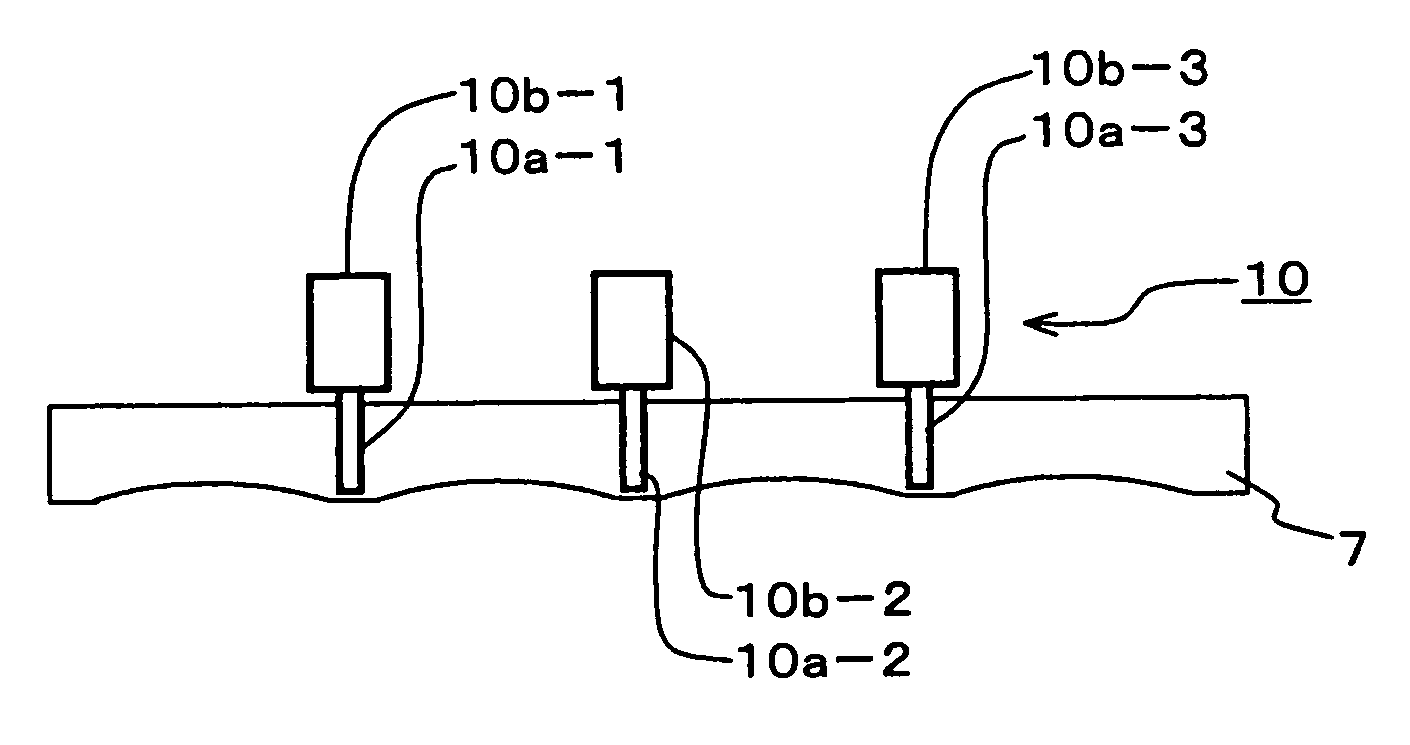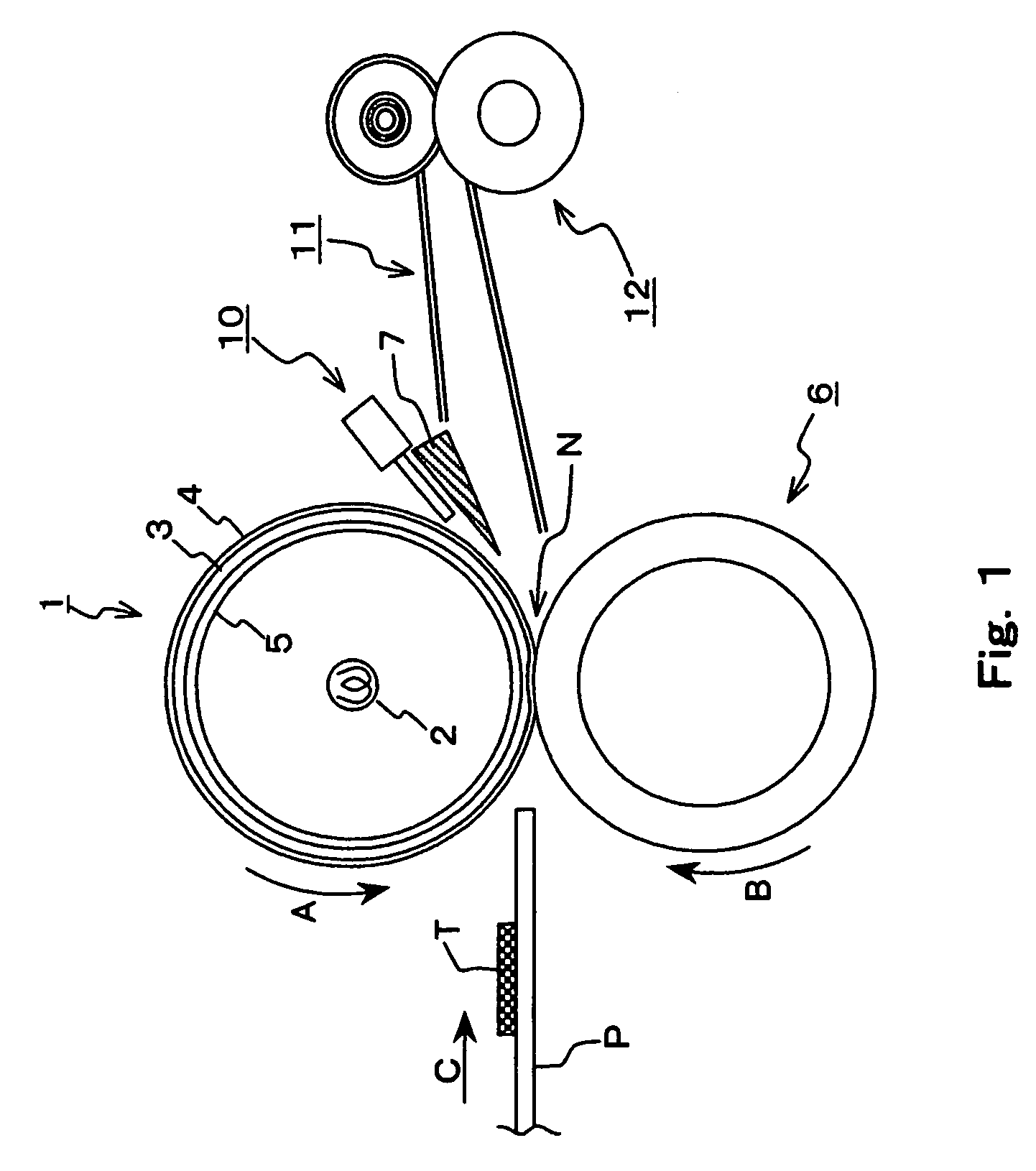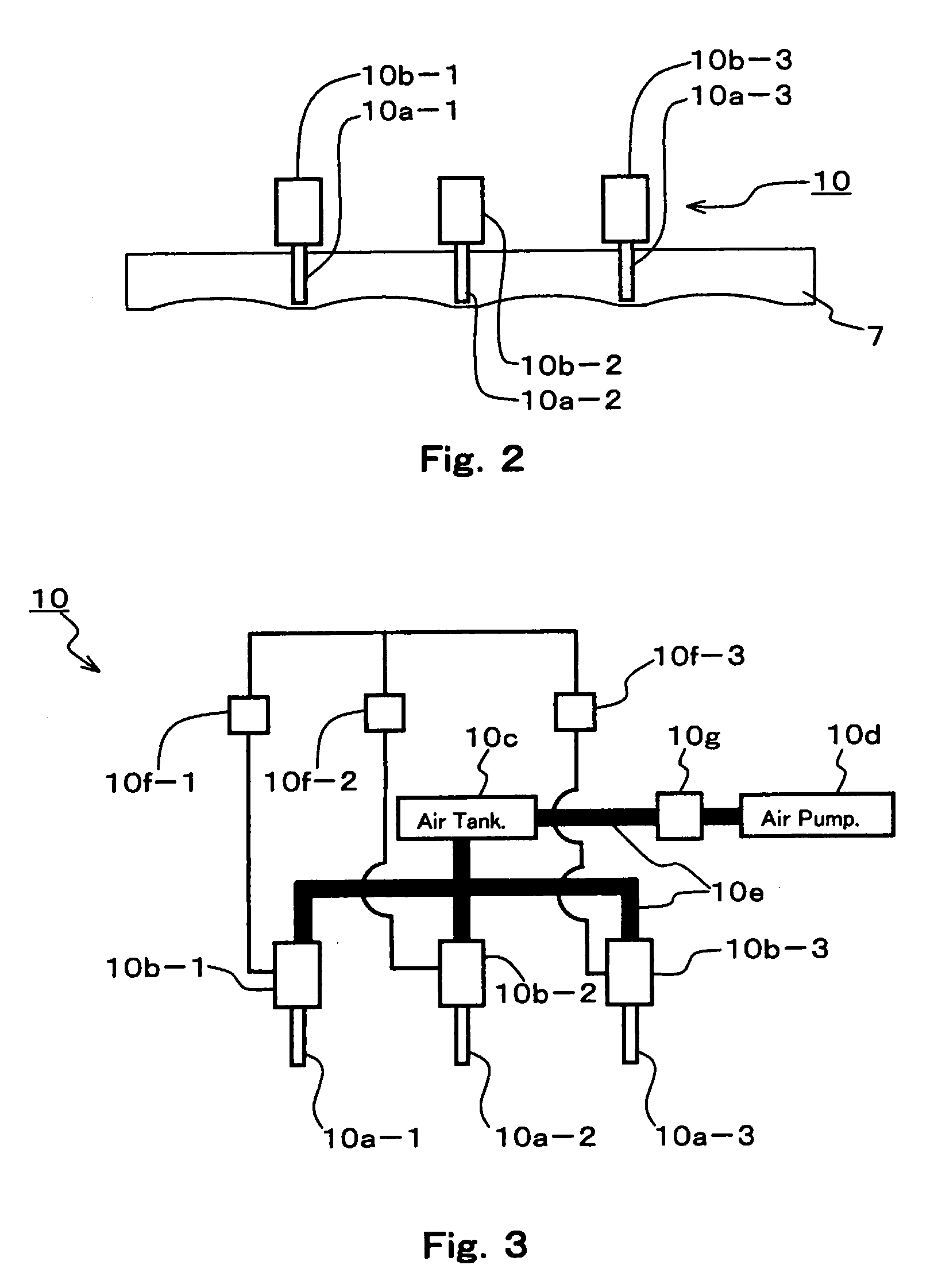Peeling device and fixing device and image forming apparatus using the peeling device
a technology of fixing device and peeling device, which is applied in the direction of electrographic process apparatus, thin material processing, instruments, etc., can solve the problems of excessive peeling force acting on the peeling member, image defect, and melted toner being liable to adhere to the surface of the fixing roll, etc., to achieve stable peeling operation and without adversely affecting image quality.
- Summary
- Abstract
- Description
- Claims
- Application Information
AI Technical Summary
Benefits of technology
Problems solved by technology
Method used
Image
Examples
embodiment 1
[0058]FIG. 1 is a sectional view of a fixing device including peeling devices according to Embodiment 1 of the present invention. The peeling devices of this embodiment are a combination of a first aspect and a second aspect of the present invention, and are of a two-roll system.
[0059]The fixing device shown in FIG. 1 includes a fixing roll (heating rotating member) 1 which rotates in a direction shown by an arrow A and a pressure roll (pressure rotating member) 6 which is driven to rotate in a direction shown by an arrow B opposite to the rotation direction A of the fixing roll 1 while the pressure roll 6 is in contact with the fixing roll 1. A sheet (recording medium) P carrying a toner image T made from unfixed toner on its surface is conveyed in a direction shown by an arrow C and inserted into a nip portion N formed between the fixing roll 1 and the pressure roll 6 to be heated and pressurized by the pair of rolls 1 and 6 so that the toner of the toner image T is fused, thereby...
embodiment 2
[0135]FIG. 9 is a sectional view of a fixing device adopting peeling devices according to Embodiment 2 of the present invention. The peeling devices of this embodiment are a combination of the first aspect and the second aspect of the present invention, and are of a roll-belt nip system. Since this embodiment is the same as Embodiment 1 in structure except the structure of the fixing device, in FIG. 9, members having the same function as those in Embodiment 1 are given the same reference symbols and their detailed descriptions are omitted.
[0136]The fixing device of this embodiment is essentially composed of a fixing roll 1, a pressure rotating member 16, and peeling devices 7 and 10.
[0137]The pressure rotating member 16 is essentially composed of an endless belt 21 stretched by three rolls consisting of a lead roll 18, a pressure roll 19, and a stretch roll 20, and a pressure pad (pressure member) 17 pressed against the fixing roll 1 by the endless belt 21.
[0138]The endless belt 21 ...
embodiment 3
[0149]FIG. 10 is a sectional view of a fixing device adopting a peeling device according to Embodiment 3 of the present invention. The peeling device of this embodiment is an example of the first aspect of the present invention and the fixing device is of a two-roll system. Since this embodiment is the same as Embodiment 1 in structure except the structure of the peeling device, in FIG. 10, members having the same function as those in Embodiment 1 are given the same reference symbols and their detailed descriptions are omitted. Therefore, in this embodiment, only the peeling device will be basically described.
[0150]In this embodiment, as shown in FIGS. 11(a) and 11(b), only a peeling guide plate 22 is provided as the peeling device. FIG. 11(a) is an enlarged sectional view of the peeling guide plate 22 when seen from a side opposite to the surface of the fixing roll 1 and FIG. 11(b) is an enlarged sectional view cut along H—H of FIG. 11(a). As shown in FIG. 11(b), the cross-sectiona...
PUM
 Login to View More
Login to View More Abstract
Description
Claims
Application Information
 Login to View More
Login to View More - R&D
- Intellectual Property
- Life Sciences
- Materials
- Tech Scout
- Unparalleled Data Quality
- Higher Quality Content
- 60% Fewer Hallucinations
Browse by: Latest US Patents, China's latest patents, Technical Efficacy Thesaurus, Application Domain, Technology Topic, Popular Technical Reports.
© 2025 PatSnap. All rights reserved.Legal|Privacy policy|Modern Slavery Act Transparency Statement|Sitemap|About US| Contact US: help@patsnap.com



